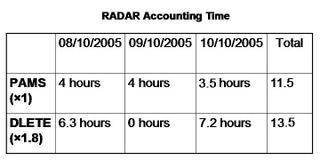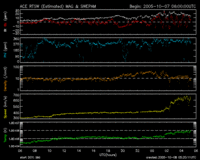Day Sixteen - Wet!
That took most of the morning and some of the afternoon. It rained through most of it, though there were some dry patches. When I got up this morning I was surprised to not see the hill behind the VHF it was completely obscured by fog/cloud from top to bottom.
Tonight the weather at Tromso is poor but at Keops it is clear and so we are running the UCL DAEA experiment. Unfortunately whilst it might be optically clear there is little or no ionosphere over Kiruna according to the radar and so the data looks very poor. Indeed we have nothing but noise from both remote sites.
It is dismantle time for the optics here at Tromso. Todd has taken his camera down and has calibtrated it thanks to sources supplied by Bjorn Gustafson. I left him packing it away a couple of hours ago. Similarly I clambered into the dome space and very carefully removed DASI and Sparkle. DASI has now been packed into its case and Sparkle awaited calibration, which Andrew is now performing whilst I babysit the radar. We need to disconnect our dome blowers and reinstate the Canadian dome blower before we leave.
Looking forward to getting home. Overall the campaign has been a mixed bag; the optics side has been a let down with only one night of potentially good data for Lancaster. I don't know how UCL have done with their FPI measurements. The Finns also had a wash out. We do have some good radar data from other experiments and so it has been successful on that scale.
Though of course every silver lining has a dirty, big, rain-filled cloud behind it. One of my interests in the PAMS study is identifying precipitation drift echoes. I think we have found some in the data from the 8/10/2005, and I suspect we have some on the 10/10/2005. Unfortunately there is a big data gap in the LANL data just at that time so I have no way of verifying. Hopefully this is a temporary effect.
Next campaign we will hopefully have the freshly repaired ARIES running and we will be able to get some very nice high spatial resolution data for both PAMS and DLETE. But that can wait until 2006...















